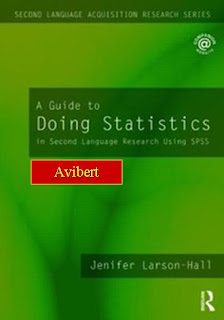A Guide to Doing Statistics
in Second Language Research Using SPSS by Jenifer Larson-Hall

Table of Contents
PART I
Statistical Ideas
1 Getting Started with SPSS and Using the Computer for Experimental Details
2 Some Preliminaries to Understanding Statistics
3 Describing Data Numerically and Graphically and Assessing Assumptions for Parametric Tests
4 Changing the Way We Do Statistics: Hypothesis Testing, Power, Effect Size, and Other Misunderstood Issues
PART II
Statistical Tests
5 Choosing a Statistical Test
6 Finding Relationships Using Correlation: Age of Learning
7 Looking for Groups of Explanatory Variables through Multiple Regression: Predicting Important Factors in First-Grade Reading
8 Finding Group Differences with Chi-Square when All Your Variables Are Categorical: The Effects of Interaction Feedback on Question Formation and the Choice of Copular Verb in Spanish
9 Looking for Differences between Two Means with T-Tests: Think-Aloud Methodology and Phonological Memory
10 Looking for Group Differences with a One-Way Analysis of Variance (ANOVA): Effects of Planning Time
11 Looking for Group Differences with Factorial Analysis of Variance (ANOVA) when There is More than One Independent Variable: Learning with Music
12 Looking for Group Differences when the Same People Are Tested More than Once Using Repeated-Measures ANOVA: Wug Tests and Instruction on French Gender
13 Factoring out Differences with Analysis of Covariance: The Effect of Feedback on French Gender
14 Statistics when Your Data Do Not Satisfy Parametric Assumptions: Non-Parametric Statistics










































No hay comentarios:
Publicar un comentario
Bienvenido a Avibert.
Deja habilitado el acceso a tu perfil o indica un enlace a tu blog o sitio, para que la comunicación sea mas fluida.
Saludos y gracias por comentar!